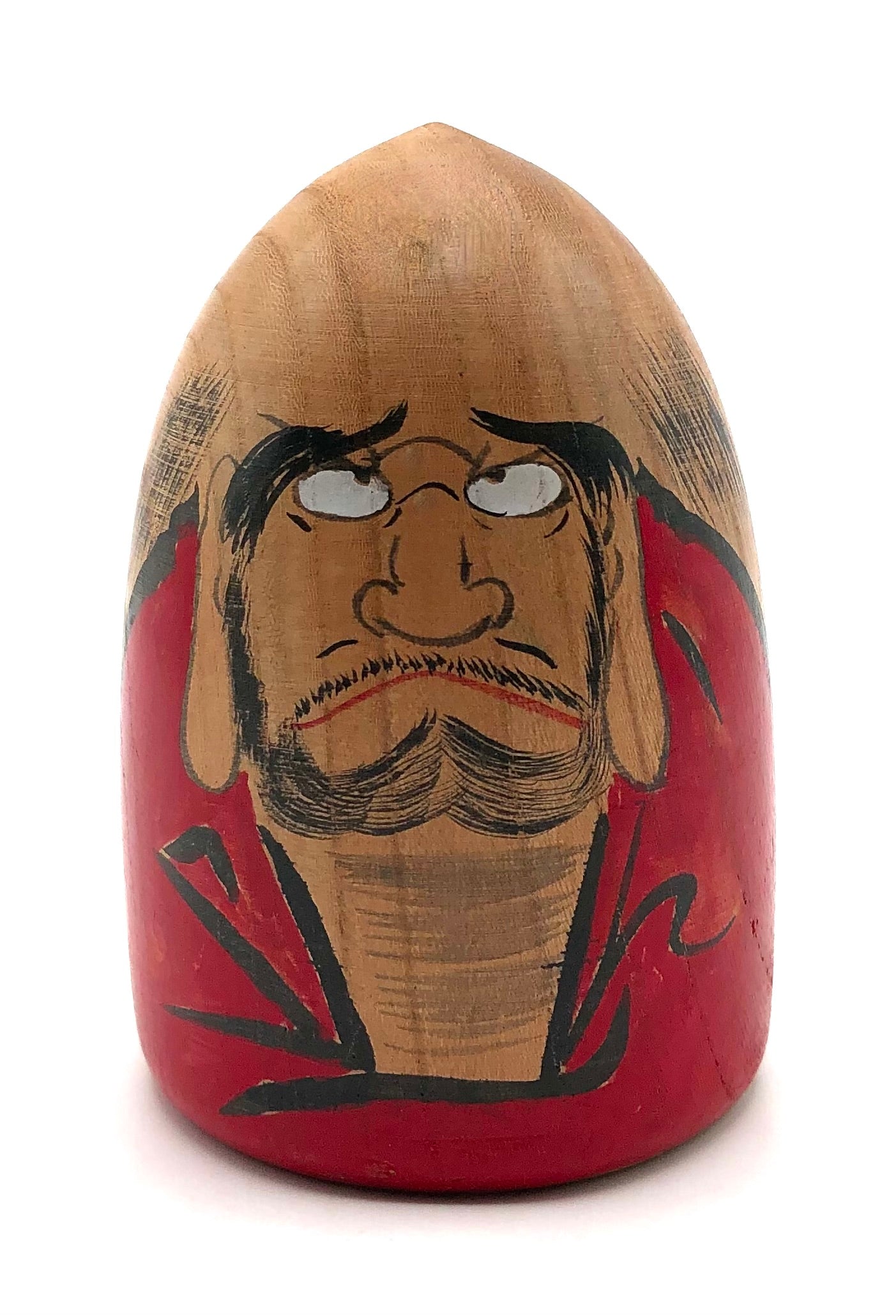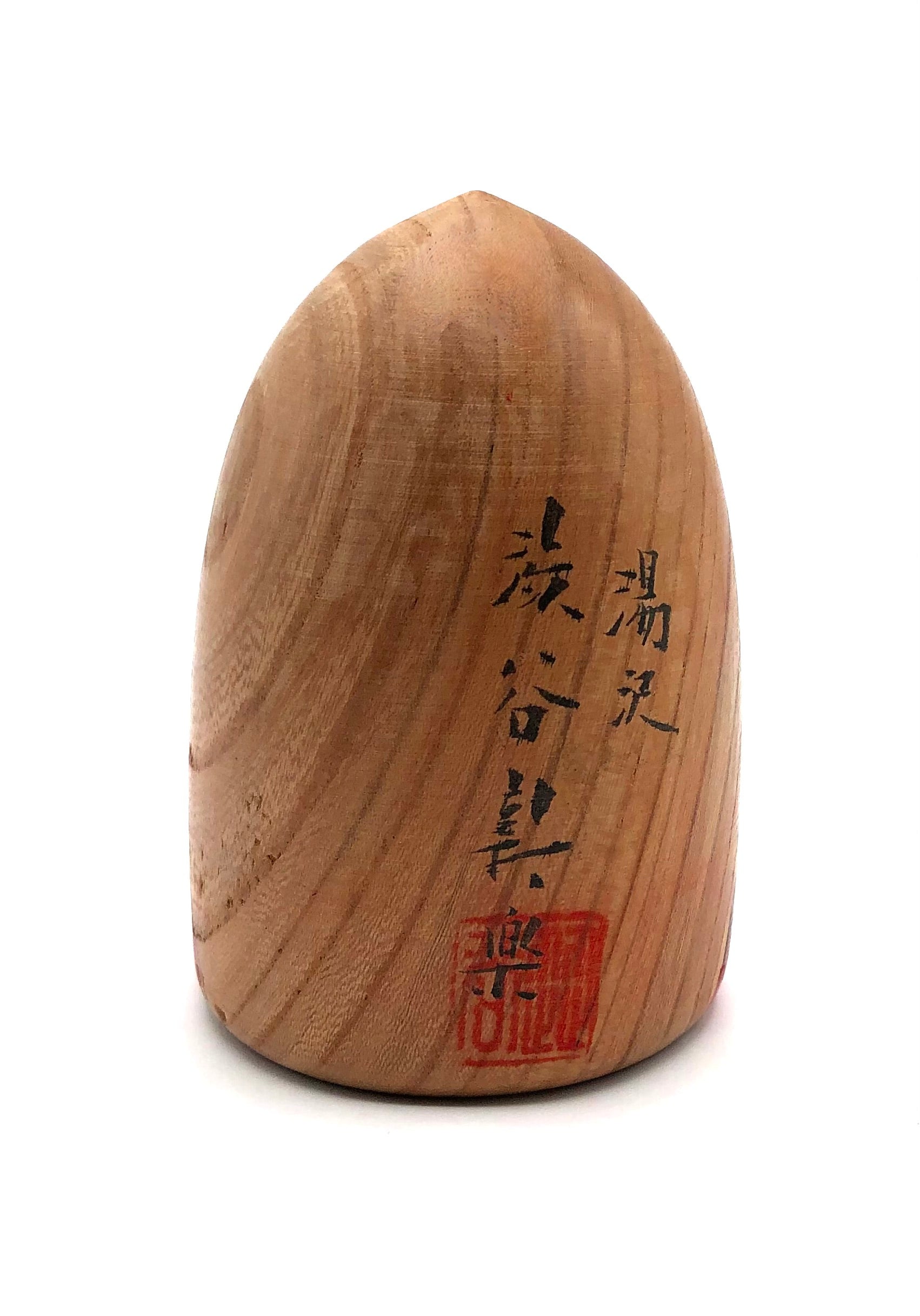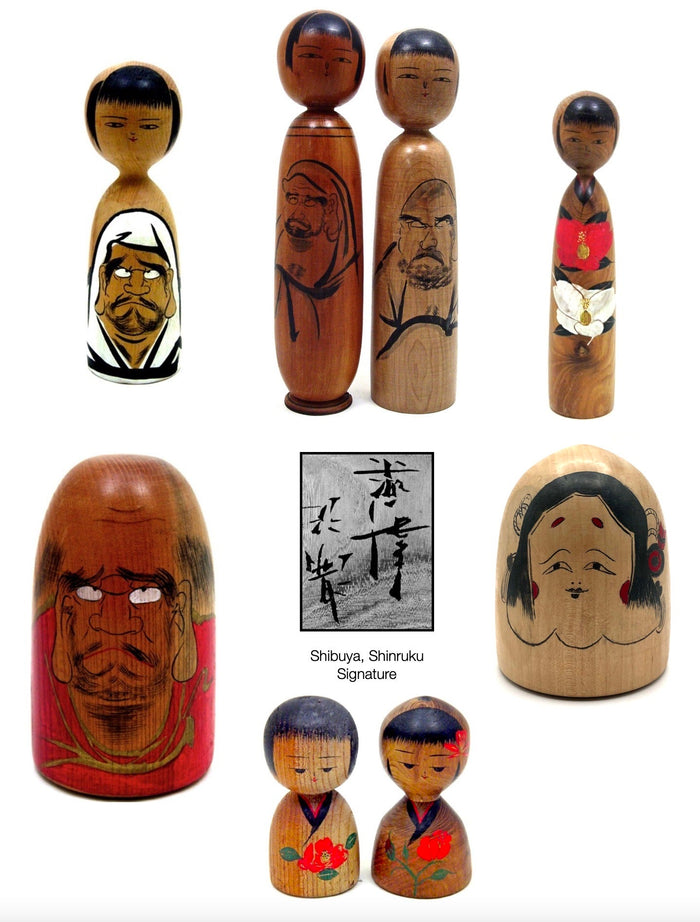

Rare Vintage Japanese Interpretation of “Daruma | Bodhidharma” | Engimono by Shibuya, Shinraku
Dimensions: 4-1/2"h
Shibuya-san is a prolific artist of Daruma dolls whose work dates from the 1960s. A Transitional artist, (one who broke away from the traditional forms and motifs found in Kokeshi), Shibuya, Shinraku is from Yuzawa City, in Akita Prefecture. Virtually nothing is known about this artist other than what he produced, except that he was a very focused and talented artist who shared an important philosophy with Daruma, the “pursuit of beauty and artistry through simplicity”. These dolls called Engimono were made for the local population to make their New Year's wishes asking to fulfill one's desires, self-sufficiency, attention to health and ending suffering, self-discipline, and business and financial success were common. These New Year requests and resolutions were done at temples where the Daruma figures were purchased.
He began his creations to spread the philosophy that Daruma practiced by producing both Kokeshi dolls with Daruma’s image, as well as in this case varying-sized figures with inverted egg-shaped heads and faces to form the basis for this Daruma figure. One sees that the image is placed on a large amount of negative background, which divides the surface and balances the design with space to appreciate the image, with unpainted areas of the doll giving form and volume.
Shibuya-san works in the sumi-e’ style of painting which achieves a suggestion of detail by using different intensities of ink and line work. As with this figure one sees the use of Daruma’s red cloak to define the figure with black accents, white fixed eyes focused on his meditation, a large nose, expressive mouth/lips, long ears, elongated ear lobes, and the characteristic crane-shaped eyebrows represented long life. When the artwork is completed, the figure is finished with natural candle wax,(Rosoku no ro). The name of the piece is on the back of the figure and Shinraku’s personal “Hanko” or “inkan” (seal).
Condition: Excellent condition exhibiting the wonderful manipulation of woods to form the figure producing a natural, aged patination and meticulous care. There are no missing elements, no scratches or imperfections related to daily use with all detailed elements intact. The object retains the original craftsmanship, meeting the standards of the Shibuya, Shinraku dolls collector.

Artisan
Woodworker: Shibuya, Shinraku
Biographical History:
Transitional artist Shibuya, Shinraku is from Yuzawa City, in Akita Prefecture. Virtually nothing is known about this artist, but it is clear that many of his dolls are in the traditional Kijiyama style, which originated in Yuzawa, Minase, and Inagawa cities. Shibuya-san’s dolls range from the bright and beautifully painted to the skillfully and minimally drawn designs. He is also a prolific artist of Daruma dolls. His work dates from the 1960s onward. There is little biographical data on Shinrak-san, but as collectors, we felt it was most important to represent all Sosaku Kokeshi artists, whether or not each artist has a written account of his/her life. We show the diversity of cultural values and the creative work produced by a multitude of artists.
In researching old writings through articles and books that remain, it is evident that the Kokeshi Craftsperson not only created beautiful forms as toys, but also kept alive cultural values, customs, and fashion through the extensive representations of Kokeshi dolls. The beauty is in the doll and not the signatures, for most masters never signed their dolls. Later they named the dolls, but only when Westerners insisted on signatures because they did not know the artists, so the carvers began to sign their works, for the carvers wanted to promote sales to make a living, during the seasons that did not provide an environment to continue their otherwise daily work.
Collector's note – descriptive qualities, standard characteristics & ornamentation styles:
At New Year’s, most Japanese individuals and corporations buy Daruma dolls and make a resolution for the New Year. The tradition began in the late 17th century as a relief measure for farmers who were suffering from famine.
There are many different styles of Daruma, as you will see by Shibuya’s creations, but there is one philosophy that all of his Daruma share, and that is the pursuit of beauty and artistry through simplicity. Noted is the fact that the images are placed on a large amount of background, which divides the surface and balances the design with space to appreciate the image. Often seen is the use of black and white paint to create the impression. Additionally, we see the celebration of seasonal succession incorporating Iris, Camellia flowers, with many having an emphasis on Bamboo. Artists working in the sumi-e’ style of painting achieve a suggestion of detail by using different intensities of ink and line work. Unpainted areas of the doll give form and volume. It is most interesting that Shibuya continues to use both traditional and creative elements to express his feelings about Japanese life and values.
Explore & Learn More about Woodworker: Shibuya, Shinraku